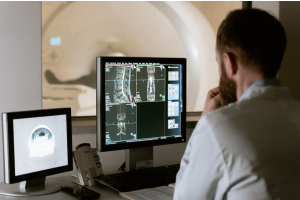Cannabis For Brian Aneurysms: Can It Help?

A brain aneurysm is a rare health condition but is quite common among the general population.
In fact, according to the Brain Aneurysm Foundation, 6.5 million people in the United States (about 1 in 50 people) have an unruptured brain aneurysm. ¹The same foundation claims about 8 to 10 people per 100,000 will have a ruptured aneurysm. And of those ruptured victims, about 50% will see fatal consequences. Furthermore, 66% of survivors will experience permanent neurological damage.
For these reasons, finding medicine to prevent brain aneurysm ruptures from occurring is significant. With that in mind, some may consider whether or not cannabis is beneficial or detrimental for brain aneurysms.
Unfortunately, there’s only so much research concerning this specific health condition. However, throughout this article, we’ll explain everything we know about brain aneurysms and cannabis.What are Brain Aneurysms?To properly function, the brain requires large quantities of blood to be delivered by a series of main blood vessels. These run up the neck and directly into the brain. As blood vessels branch out, they become smaller and smaller.
When walls of blood vessels within the brain become weak, they create a brain aneurysm. Typically, an aneurysm occurs where the blood vessels divide and lead to smaller vessels.²While the exact cause of this weakening isn’t 100% clear to researchers, a few factors potentially lead to it.
These include:
- Age (more apparent in people over 40)•Family history
- High blood pressure
- Pre-existing weaknesses in blood vessels
- Severe head injury
- Smoking
- Sex (women are more likely to develop than men)
- Substance abuse (specifically, cocaine abuse)An unruptured brain aneurysm can cause the following symptoms:
- Difficulty speaking
- Headaches
- Loss of balance
- Numbness in one side of the face
- Pain around or above your eye
- The trouble with concentration and short-term memory
- Visual disturbances (double vision or loss of vision)If you experience a ruptured brain aneurysm, you’ll develop the following symptoms:
- Feeling of being sick
- Loss of consciousness
- Seizures
- Sensitivity to light
- Siff neck (or neck pain)
- Sudden confusion
- Visual disturbances (double vision or loss of vision)
- Weakness in 1 side of the body
How are Brain Aneurysms Typically Treated
In order to avoid rupture, preventive surgery is the best measure for those at high risk. However, surgery will not be recommended to everyone as it comes with the potential for serious complications, such as a stroke or brain damage.If you’re at low risk for a brain aneurysm rupture, you’ll likely be given medication that helps to lower your blood pressure. Furthermore, a doctor will recommend that you change certain aspects of your lifestyle, such as losing weight or eating less saturated fat.If a rupture occurs, you’ll likely experience immediate surgery. This may include neurosurgical clipping or endovascular coiling.With this in mind, it becomes evident that the best course of treatment is avoiding brain aneurysms altogether. And some may wonder whether or not cannabis helps in this prevention.
Cannabis for Brain Aneurysms: Does it Help?
The simple answer is no. If you’re at risk of a brain aneurysm, it’s best to stay away from marijuana. At least standard cannabis contains high levels of tetrahydrocannabinol (THC).The reason for this is recent research has found that recreational cannabis usage can impair oxygen metabolization and energy production within cells. In turn, cells become more vulnerable and have more difficulty transferring blood to the brain.³Admittedly, the authors admitted these findings were limited. Therefore, it cannot be concluded that consumption of THC will significantly increase the risk of an aneurysm rupture.
Yet, it can also not be denied that the risks have been observed in a scientific setting and should be avoided at all costs, mainly because 50% of aneurysm ruptures are fatal.As study author Michael T. Lawton, MD, told Everyday Health, “We’re all vulnerable to a bleeding stroke or a ruptured aneurysm; however if you’re a routine marijuana user, you may be predisposed to a worse outcome from a stroke after the rupture of that aneurysm.”4
Some other key areas of this study include:
- Cannabis consumers were 2.7 times as likely to develop delayed cerebral ischemia - a complication two weeks after a blood vessel burst.
- Those who tested positive for THC were 2.8 times as likely to develop long-term physical disabilities.
- Cannabis consumers were 2.2 times as likely to die from these complications.
The vast majority of available research concerns tobacco smoking rather than cannabis. However, since smoking is the most popular form of cannabis consumption, it’s worth looking into whether or not the effects of smoking play a role in an aneurysm.Interestingly, research pinpoints that while nicotine provides risks for a complication, it’s the tobacco smoke in the body causing complications.
More specifically, smoke damages artery walls and breaks down their lining.5In turn, the body will attempt to repair these walls by forming clots and plaque. But this build-up makes walls weaker and increases the chance of an aneurysm.Furthermore, as a stimulant, nicotine also raises your blood pressure. Over time, this can lead to further weakening of the artery walls.
According to a 2020 study, women between the ages of 30 to 60 who smoked were four times more likely to develop a brain aneurysm than nonsmokers. Furthermore, the study found that women with high blood pressure were seven times more likely to develop complications.6So, how do these findings correlate to cannabis smoking? To begin, we’ve mentioned that smoke in and of itself increases the risk of a brain aneurysm. With that in mind, regular cannabis smoking will likely also impact artery walls.
As also mentioned, a rise in blood pressure also increases your risk. As of this time, it’s believed that both cannabidiol (CBD) and THC can raise your blood pressure and, theoretically speaking, increase your risk of an aneurysm.7But as discussed before, there simply isn’t enough research to come to definite conclusions. Final Word Without conclusive evidence, it’s impossible to say that cannabis dramatically increases the chances of a brain aneurysm. But the evidence we do have is pointing in that direction.
More particularly, smoking cannabis seems to come with the most significant risks. At least in terms of the research done regarding tobacco smoke.With this information in mind, those at risk of a brain aneurysm should avoid cannabis altogether. While research remains inconclusive, the possibility of complications is all too high.And being that ruptured brain aneurysms often result in death, these aren’t the kinds of risks worth consuming cannabis over.
Written and Published by Paul James in Weed World Magazine issue 160
Featured Image: Pexels












Validate your login